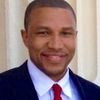The situation at the University of Missouri that has been catapulted into the national spotlight over the last week represents a focusing event for the country on issues of race and equity in higher education and the potential power of student athlete involvement in issues of social justice.
The events at Missouri garnered media coverage of racial incidents, intolerance, and other forms of adverse behavior that was much needed and has led to the exposure of equally compelling issues of poor access and representation at many institutions of higher education. The aftermath of the resignation of the University of Missouri System President Tim Wolfe has caused colleges and universities across the country to reexamine their status on issues of diversity on their campuses.
For example, the University of Michigan and New York University have had campus-wide meetings on issues of diversity and race. The University of Southern California has pledged new steps to increase "diversity" including the establishment of a diversity task force and new funds to establish programming. The ultimate outcome of these efforts remains to be seen in the backdrop of disparate conditions and disparities in higher education have existed for many years without receiving adequate focus and attention.
The problems of diversity at many institutions of higher education begin with access. The future of access to higher education for many minorities may be in peril depending on the Supreme Court's ruling in the affirmative action case Fisher v. University of Texas that will determine the status of affirmative action policies. This case involves a challenge to the Court's prior ruling that diversity in higher education is a compelling governmental interest. The battle hinges on and will potentially determine if race can be used as one of the many factors to achieve an institution's diversity goals.
This is the just the latest development in an attack on many programs that have helped to bring more diversity on college campuses both for students and for faculty. The underrepresentation of students of color and low income has existed for decades at colleges and universities. Some of the numbers from a 2013 University of Pennsylvania report entitled "Black Male Student-Athletes and Racial Inequities in NCAA Division I College Sports" suggest that the primary recruitment mechanisms for black males may be their football and basketball teams for many universities. The report "found that black men were 2.8 percent of undergraduate students but 57.1 percent of football players and 64.3 percent of basketball players across the 77 major sports programs." Perhaps pressure should be placed on these institutions to recruit black non-athletes with half of the effort that they pursue athletes.
The increased perception of access to elite universities through athletics may have helped to foster the view among many minority and low-income students and parents that they may be better off investing the bulk of their energy and effort in athletics in the hope of obtaining a basketball or football scholarship regardless of what odds are against them. For better or worse, this data sends the message to minority and low income communities seeking access to elite universities that it is better to invest in athletics instead of academics. For example, Black males make up 3.3% of undergraduates at the University of Miami but 75.7% of the basketball and football teams. Black males make up 1.8% of undergraduates at the University of Texas, but 67.9% of the basketball and football teams. Higher education in this country must see value in young black men beyond the court or playing field.
One of the demands made by the Missouri students and other students at universities pertained to a lack of Black faculty. The demand from the Missouri student contingency read as follows: "We demand that by the academic year 2017-2018, the University of Missouri increase the percentage of black faculty and staff members campus-wide by 10 percent." An Associated Press report found that the University of Missouri would be alone if it indeed increase its percentages by such a margin. "No state's 'flagship' public university campus had a black faculty population approaching that level, and only a handful topped even the 5 percent mark."
The doors to employment have been closed for many qualified prospective minority and female faculty members. Policies and practices that have been deployed in institutions of higher education have yielded disparate outcomes even if they did not emanate from discriminatory intent. The result has arguably been an institutionalized lack of access diversity across various areas of the higher education arena.
There is a need for an increased level of targeted recruiting of both potential minority students and faculty. This would build up the potential applicant pool of students and faculty of color and increase the chances for access to these institutions. Admission for minority students and prospective faculty has been made to seem virtually impossible for many qualified applicants.
A lack of access and diversity at higher education institutions threatens the economic future of the country at large and predominately minority communities in particular because most of the new jobs and careers will require post-secondary education. Colleges and universities can no longer be permitted to have a "smoke and mirrors" strategic plan for equity that yield few tangible results or a "dog and pony show" diversity plan that consists largely of recruiting students to score touchdowns and entertain the student body. The numbers show that there is much more work to be done. The time has come for massive change in the areas of access and diversity in higher education.
Marcus Bright, Ph.D. is a political and social commentator.
